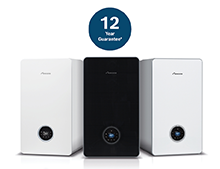How does the operation of a heat pump differ from a boiler?
A heat pump is at its best when it’s circulating low temperature water around the heating system.
The heat pump is best run at all times as dictated by the external weather temperature and the internal room temperature.
Because of the low temperature operation, it is not best suited to be operated intermittently like a boiler. The heat pump needs to be run in a “steady state” and avoid the need to heat the house quickly.
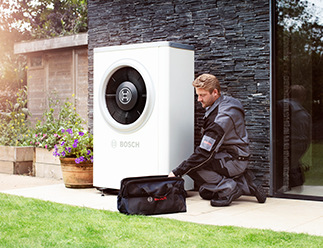
Understanding monobloc vs. split design
Air to water heat pumps comprise of either a monobloc or split design. Our 7001iAW and 7400iAW air to water heat pumps are a monobloc design, meaning you do not need to be F-Gas registered.
- Easy installation and quick to integrate into heating hydraulics
- Low-maintenance
- Complete and concealed refrigeration circuit in the outdoor unit
- The heating process and transfer take place in the outdoor unit
- Piping between outdoor unit and indoor unit is a separate hot water circuit
- The external unit can be sited up to 30m away from the property using highly insulated pipework
Within the Monobloc design image – 1) Heat pump 2) Refrigeration circuit 3) Heating circuit for heat pump 4) Indoor unit 5) Heating circuit for house
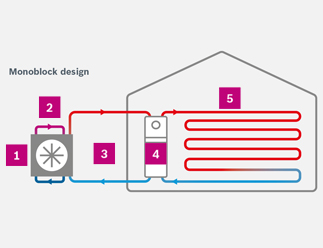
If I want to diversify my business and start installing heat pumps, what steps do I need to take?
You would need to attend a training course and obtain the necessary level 3 qualification as well as undertake a low temperature heating design course, both of which offered by Worcester. It would also be advisable to enrol onto the Micro Certification Scheme, (MCS), where you can access any Government funding for heat pump installations that may be available.
Self & New Build installations
More ideally suited for Self and New Build, where the property and space required can be built around the technology.
Designed building fabric can be added which can mean there is more insulation and therefore less demand for heat.
Retrofit installations
A heat pump can be connected to an existing heating system.
Several conditions need to be checked to avoid issues with customer satisfaction and running costs;
- A heat loss calculation to determine the correct radiator or heat emitter sizes.
- The homeowner needs to be instructed as to how differently a heat pump needs to operate.
- Additional insulation measures such as cavity wall, double glazing etc, may be needed
- If the existing system is a combi boiler, then a hot water storage cylinder will be required.
Cost consideration
As a rule of thumb, an air to water heat pump will cost between £8k and £15k. This depends on the site and as to whether the existing heating system can be used and the position of the equipment etc.
A renewed Boiler Upgrade Scheme was announced on September 20th 2023 that increased the subsidy from £5000 to £7,500 for air-to-water and ground-source heat pumps.
What grants are available?
Our air to water and ground source heat pumps are eligible for the Boiler Upgrade Scheme. Homeowners in England and Wales can receive £7,500 towards the installation of an air-to-water and ground-source heat pump.
Key scheme information can be found on the government website.
Commissioning requirements
To commission and service air to water heat pumps, you must be MCS certified or subcontract that aspect of the job to a company or person who is.
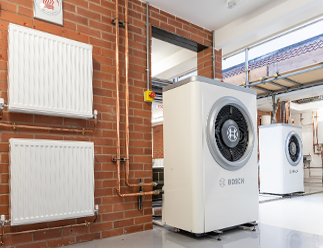
Training requirements for Heat Pumps
Everything you need to confidently fit Air to Water Heat Pumps.
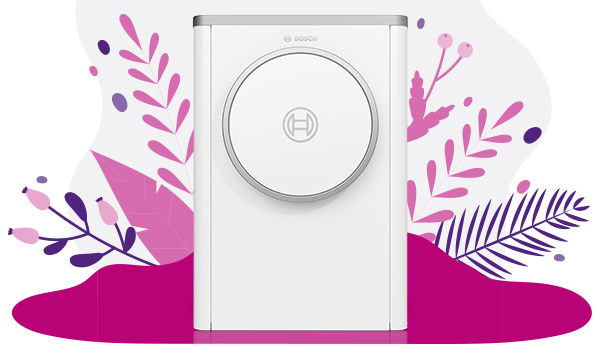
About Air to Water Heat Pumps
Learn about the technology and our products.

About Hybrid Heat Pumps
Combination of two or more technologies to provide heating and hot water to the home.

